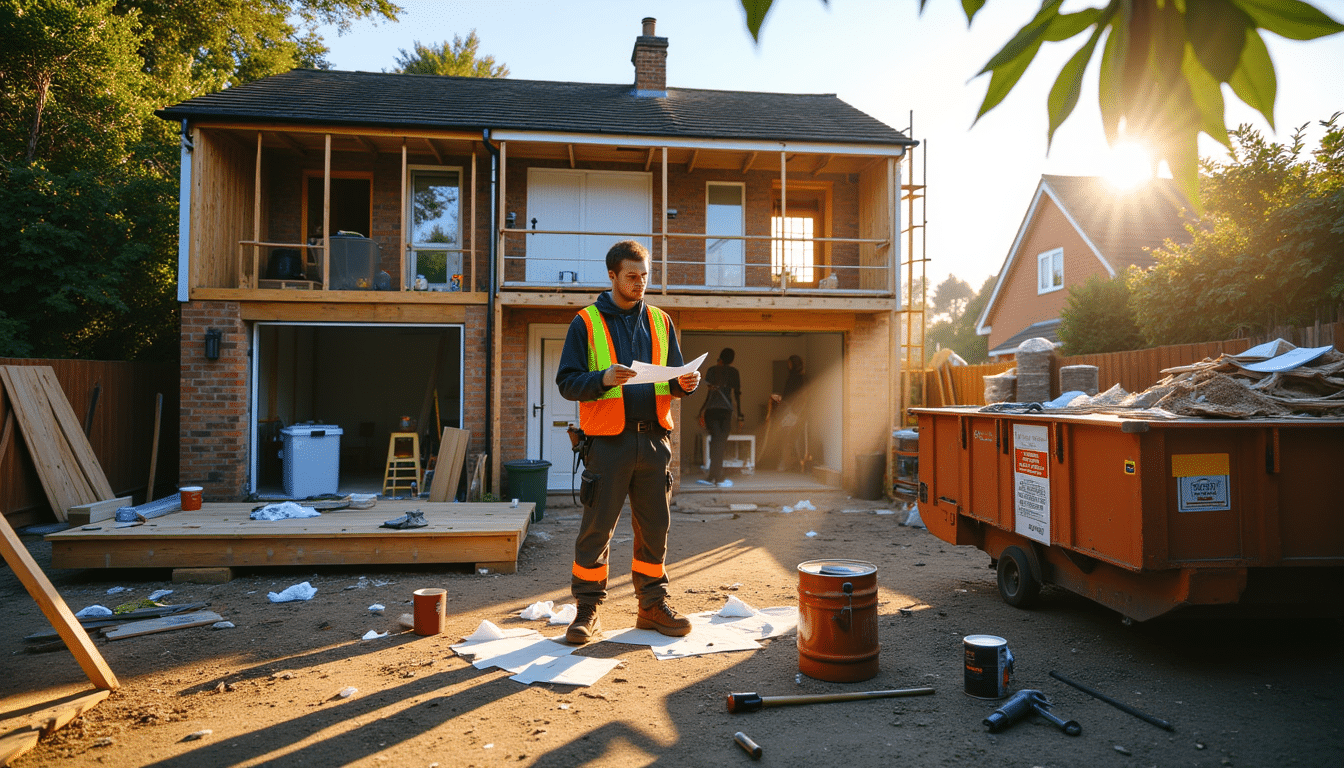Underestimating Costs and Timelines
When the sun’s out and the days are long, it’s easy to get swept up in renovation enthusiasm. But one of the first traps homeowners fall into is underestimating how much the job will cost, and how long it’ll actually take. Summer is peak period for builders and tradespeople across the UK, and that demand drives both prices and waiting times up. I’ve seen plenty of projects stalled mid-way because a homeowner didn’t account for material delays or labour shortages – not to mention the inevitable ‘hidden extra’ that crops up once walls are opened or groundwork begins.
To sidestep this, always get multiple quotes and make sure they’re detailed. Ask exactly what’s included and what might incur extra charges. Build in a contingency pot (I usually suggest around 15% as a rule of thumb) for surprises. And don’t rely on best-case timeframes – if your contractor says four weeks, assume five or six, just to be realistic. Even summer has its share of downpours that can throw off outdoor work.
Cutting Corners with Quality
Trying to finish work cheaply and quickly is a false economy. Whether it’s rushing out to buy bargain-bin timber or trusting a bloke with no credentials based on a Facebook ad, I’ve met many homeowners who ended up paying twice – once for the botched job, and again to have it redone properly.
Avoid that headache. Vet every tradesperson you bring into your home. Look for accreditations (like Gas Safe or FENSA, where appropriate), ask to see past work, and check references. When it comes to materials, focus on durability and suitability – not just cost. For example, if you’re replacing windows or doing roof work, make sure your choices won’t just look good now, but last through a Lancashire winter without crumbling or leaking.
And here’s the brutal truth: If you’re attempting anything structural or fiddly, like electrics or plumbing, and you’re not trained or extremely experienced – don’t DIY it. It’s not just about standards, it’s about safety.
Neglecting Permissions and Building Regulations
Here’s a classic summer mistake: starting work assuming you won’t need planning permission, then finding yourself ordered to stop halfway through. Even relatively minor upgrades can fall under building control, especially if structural changes are involved. And if your home’s listed or in a conservation area – which is not unusual in places like Lancaster or Clitheroe – the rules get even tighter.
Before anything begins, contact your local planning office. They can tell you whether permission’s needed. Much of the time, you’ll fall under permitted development, but that’s not always the case. And for internal alterations – like knocking down a supporting wall or converting a loft – it’s building regulations you need to think about. Ignore them, and not only could you face fines or have to undo your work, you could also struggle to sell the house later on.
Poor Project Coordination
Summer renovations often involve multiple trades, and things quickly fall apart when nobody’s managing the schedule. I’ve seen tilers turn up before plumbers, or decorators trying to finish walls before electrics are signed off. Without coordination, things overlap in the wrong order, creating delays and added costs.
If you’re managing the project yourself, get a clear work programme set out in advance. Plot when each trade is expected, and allow buffer days between them – you never want plasterers working around electricians. Better still, speak to each trade about their working timeframes and dependencies. If the job’s large or complex, hiring a project manager will be worth every penny.
Ignoring the Impact on Outdoor Spaces
Driveways churned up by skips, lawns ruined by scaffolding, plants withered under rubble – your garden often takes the brunt of summer works, and it’s usually not factored into the plan. For those investing time and money into outdoor living spaces or landscaping, not protecting what’s there can undo all the good you’re trying to achieve.
So, plan protection from the get-go. Flag to your contractors what needs safeguarding. Lay protective sheeting over lawns if heavy foot traffic’s expected. And if there’s decking or paving involved, get it covered during messy parts of the build. Also, check where skips, materials or equipment will be stored – having bricks dumped on new turf is a sure way to regret not asking ahead.
Takeaway Tip
Treat your summer renovation with the same care you would a winter boiler repair – thorough planning, qualified professionals, and a realistic schedule. Rushing now leads to stress later. Give yourself breathing room in both time and budget, stick to quality, and never skip the legal checks. Done right, your summer project can carry your home beautifully into the colder months – and even add a little value along the way.






